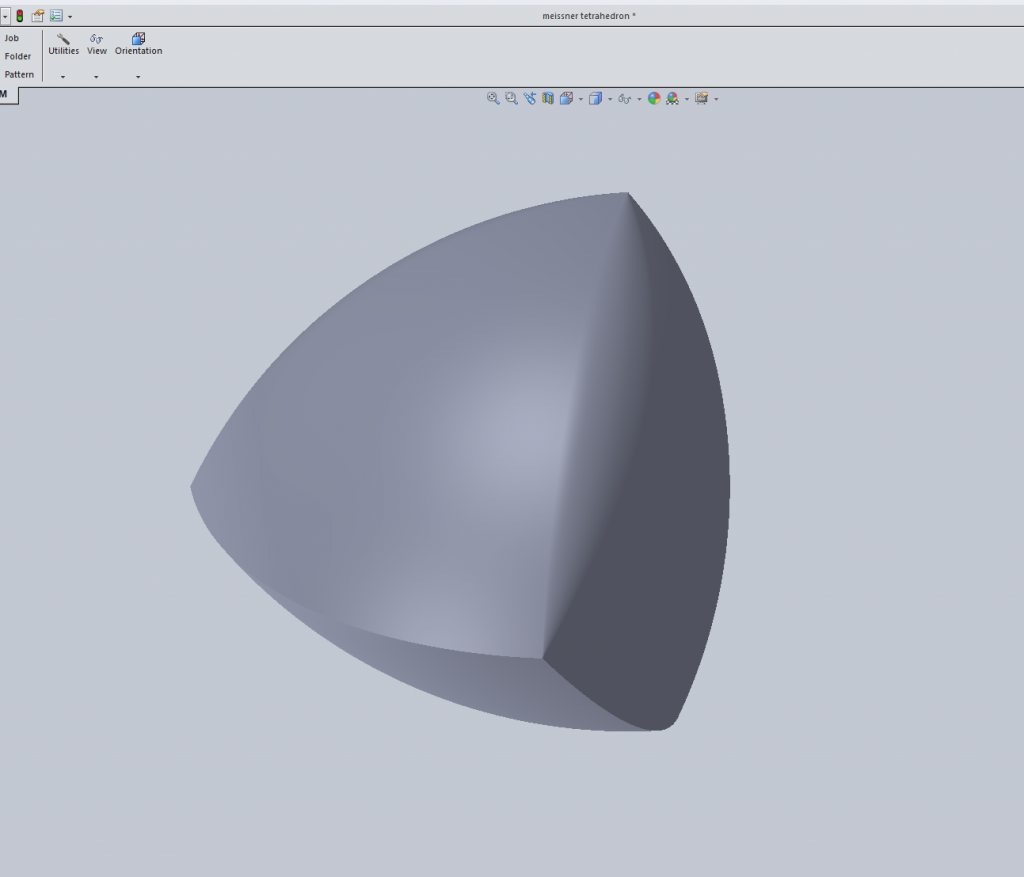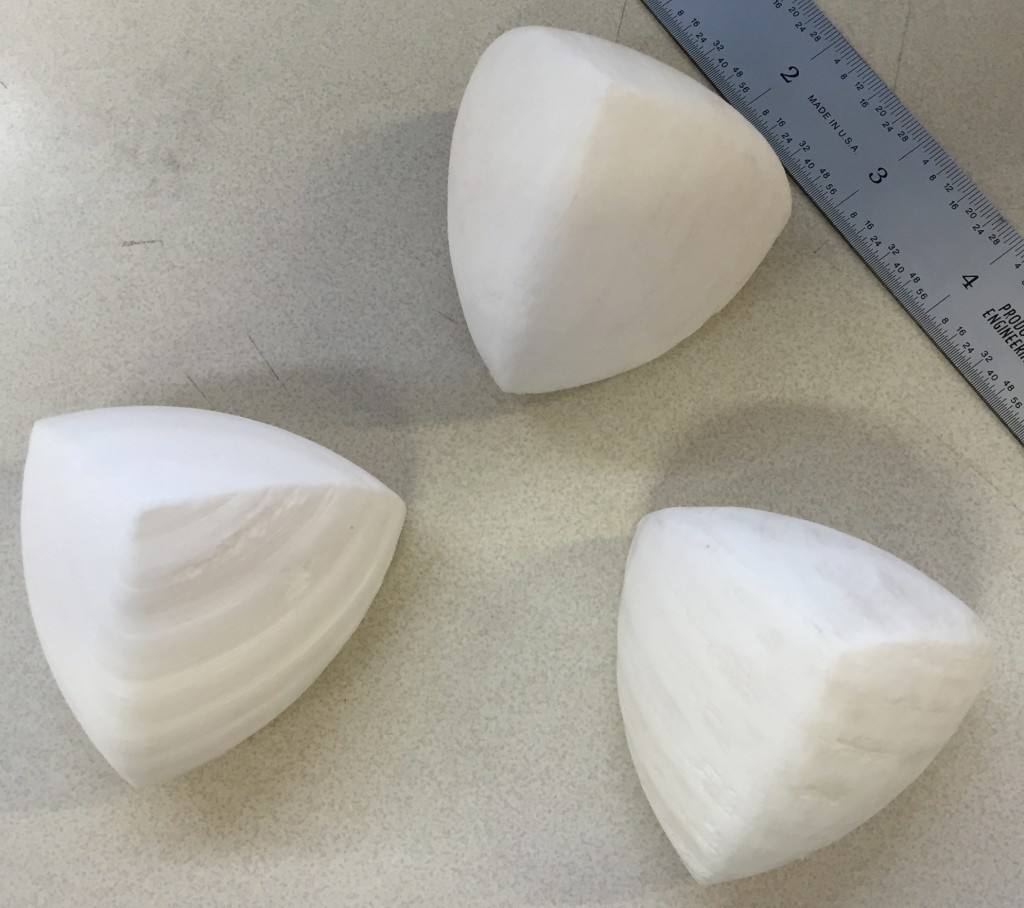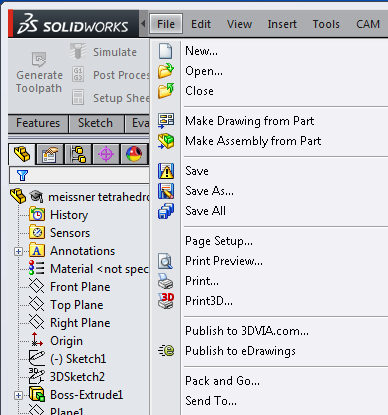I was contacted by Prof. Kyle Ormsby in the Math Department a while back about a project he was working on with his new 3D printer, a recent-generation Makerbot. The idea was to create a few “bodies of constant width”. A sphere is the simplest body of constant width but it turns out there are others as well.
Here’s the requisite link to the Wikipedia paragraph on Meissner Bodies. There are lots of cool things about these objects and this video really sums a lot of it up. The cool thing is that they can act like ball bearings even though they’re not round.
Kyle wanted to make a few of these objects on his printer but it turns out that drawing them up into a 3D model is relatively complex. I’ve been using Solidworks whenever I have the chance to help visualize projects or assemblies and it turns out that it’s great for this application as well.
Unfortunately I haven’t had the time (and I’m not sure I’m even capable given my level of Solidworks competency) to draw them up but the internet giveth in the form of GrabCAD, a site that hosts lots and lots of free CAD models the people have drawn up and posted. As you can imagine, someone had drawn up some surfaces of constant width and posted them.

I was able to download the files, open them in Solidworks, and create an STL file for Kyle. He took that file and finessed it into his printer and, 45 hours of printing later, he delivered 3 (of the 6 he made) Meissner Tetrahedra.
After removing the bases and support structure, grinding off the ripples (printer platform was apparently vibrating a little), and polishing with an acetone vapor here they are.

I loved this project because it was a great interface between Solidworks, 3D printing, and standard shop practice. I hope that we’ll be able to work on more 3D printing and Solidworks projects in the future. At some point we hope to obtain a 3D printer for the Fab Lab as well. At some point it’d even be fun to try out Solidworks File menu item, Print3D!
How cool is that?
Update:
Turns out that the reason they didn’t polish up that well in the acetone is that PLA isn’t really very acetone soluble. But PLA has good solubility in ethyl acetate. After a quick dip in an ethyl acetate vapor bath one of the tetrahedra came out markedly smoother. I think we can improve this process to make some really nice and shiny parts.

